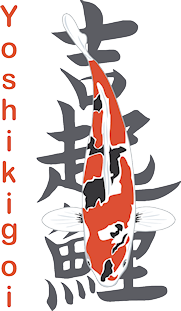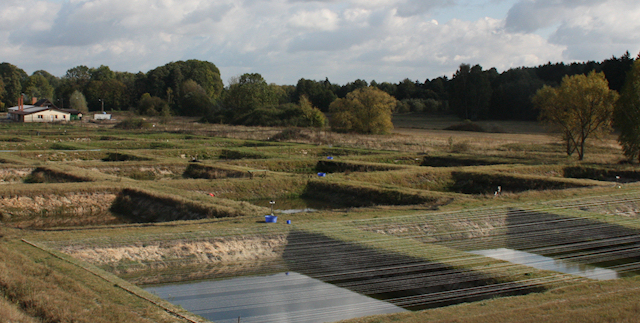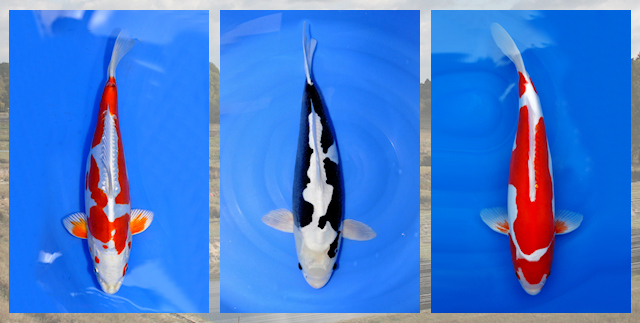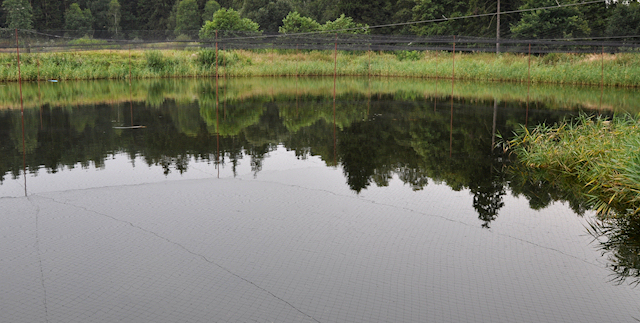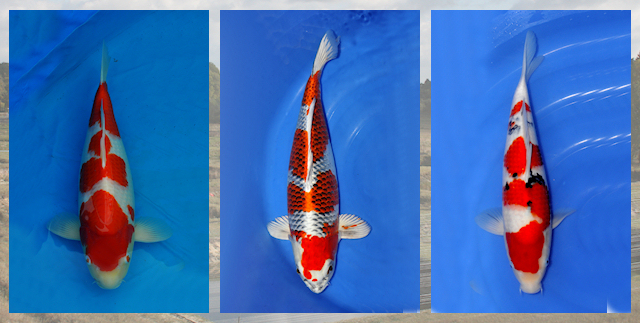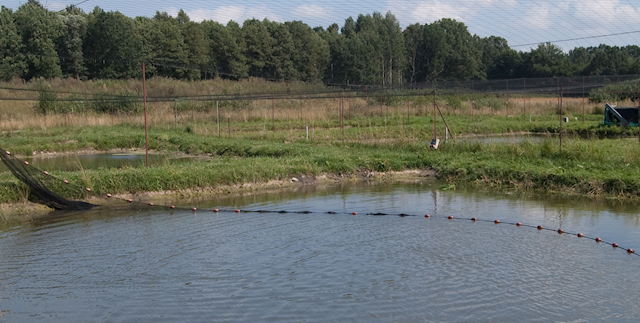Last week we talked about the breeding of Kohaku and what is important. After the breeding we have a few more issues that are very important. To have the best potential parent koi is one part of a successful breeding. To get a good survive and grow the most of the offspring to 10-18 cm is a different story. For that we need a larger amount of mud ponds and water. Not only water, but also we need the right aquatic life like plankton and algae in the mud ponds to feed the fry. Also we have to make sure that there are no or almost no natural predators in the mud ponds. The next step is a fast and severe selection, after the fry are just 4 to 6 weeks old. This to make sure that the remaining selected fry have a better chance of developing and growing. When there are too many in the pond the small Koi will almost stop growing or in all cases grow much slower. This will have an impact to their future development. Also we can then guarantee and maintain the best possible water quality. If you think logically, the more fish means more pressure on the water quality. The food and multiple feedings a day is again something that is crucial in the development of the fry to Tosai and older. Then we have to factor in an element of luck. By that I mean a warm and early spring and a long warm summer. For optimal development and growing we need water temperature to be 24 degrees Celsius. So the longer we have this temperature the better and larger will the Koi be.
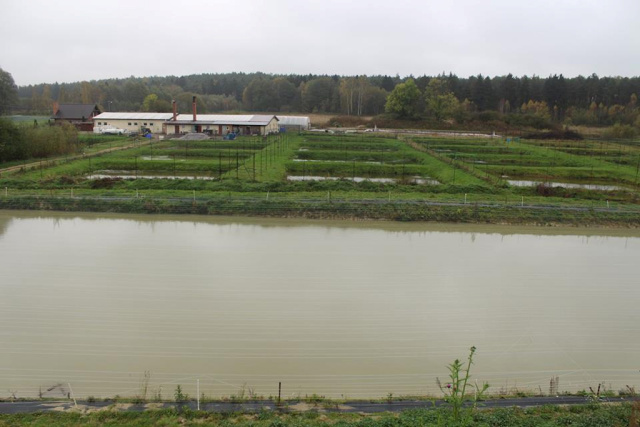
1: The importance of an early and warm spring.
When we have an early and warm spring we can start early with the breeding process. The more time we have to grow the Tosai in the mud ponds, the bigger they will be when winter arrives. In Japan breeders do have the big advantage of an early and warm spring. Therefore the first fry that they place in the mud ponds have a much longer growing season than for example we do in the colder parts of Europe. Most breeders in Japan start early May. Very often we can start 2 to 4 weeks later before we have the proper water temperature. To give the fry the best possible chance to survive we need to have minimum water temperature of 16-18 degrees Celsius. The reason for that is not only the explosive grow of the necessary aquatic life ( food), but also that the fry do not grow fast enough in colder water. Luck is also when the summers are warm and that the water temperatures are 23 to 25 degrees Celsius for a long period of time. Also this lucky fact is something that the breeders in Japan have almost every summer. Water temperatures in Niigata Japan in the summer is for about whole the summer between 22 and 28 degrees Celsius. This can go on for 4 to 5 months. So this can sometimes become even too warm. They then need to cool them down and ad a lot of oxygen in the water. The average water temperatures we have in Poland for example is between 19 and 21 Degrees. When we do have warmer water temperatures it is almost always for just a few days or week. For that the European Summers are too much fluctuating. Because growing and digestion is linked together the results are different when the temperatures are high or low. As most people know Koi digest on 21 degrees Celsius about 1 .5 % body weight a day. On 24 Degrees Celsius this is 3 %. So that is double. On every kg Koi food you put in your Koi you get about 0.6 kg back on weight on the Koi. So if you feed 1.5% or 3% that is a big seasonal difference. So because of that a long and warm summer is what all breeders hope for.
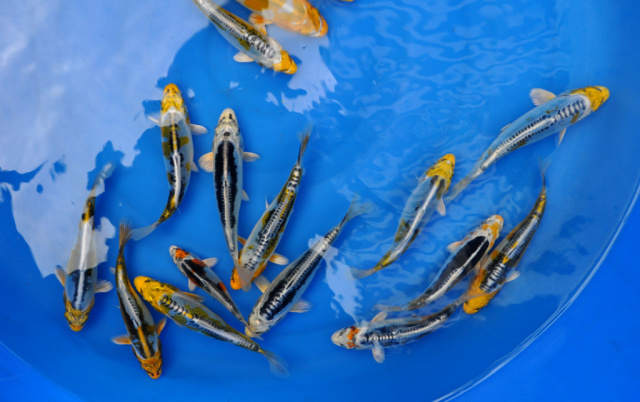
2: The number of Koi a farm can breed.
If a breeder has a good spring it means that he can start breeding early. That means bigger Koi and in many cases also more Koi. More Koi because we can start earlier. Bigger because of the warmer weather and the longer time period they are in the pond to grow. More because we have more time to select. In order to fully understand this last line, I will try to explain how this works on the Yoshikigoi Koi farm. We have to select all the Koi and we only have a limited time to do so. On our farm when we start the selections we also need to breed regarding the fry we can select. That means that if we breed 2 million fry in one week and we do the same in week 2 we have a total of 4 million fry in just two weeks. The issue is we can only select 1.5 million in one week. That would mean that we still half a million fry to select. In two weeks that would be half a million from the week before and half a million from the week after. So in just two weeks you would have already one million fry that have not been selected. Do this for 6 more weeks and you see where this is going. The non-selected fry will not develop anymore in the best way possible and also the bad are still mixed with the good. To prevent this it is important that we breed the amount we can also select. So if the breeding season starts 2 to 4 weeks later because of a less warm and early spring we will also breed less. The last breeding are mostly done in July and sometimes in early august. The ones we do in early august are almost always new breeding that we like to test on their potential and results. We do keep from the new breeding’s only a small part of the fry and kill the rest before we even place them in the pond. This we do because of the uncertainty of the outcome on quality Koi and also because the less we place from the beginning in the mud pond, the faster they grow. So in a much shorter time we have bigger offspring and can do a faster selection. We should also not forget that in September the weather is really deteriorating and in early November all our Tosai are already selected and the best one’s are placed inside to grow. When we select the new breeding’s then for me it is only important if the quality is what I was suspecting. When yes, we know that we can use the new breeding in the next year. It is the average of good Koi that counts in a breeding. So with a small breeding Like we do with new breeding’s this average must be good as well.
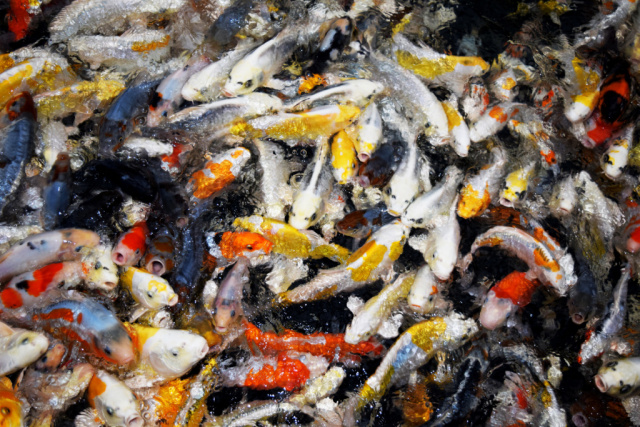
Next week part 3
The importance of a mud pond and the fry.
